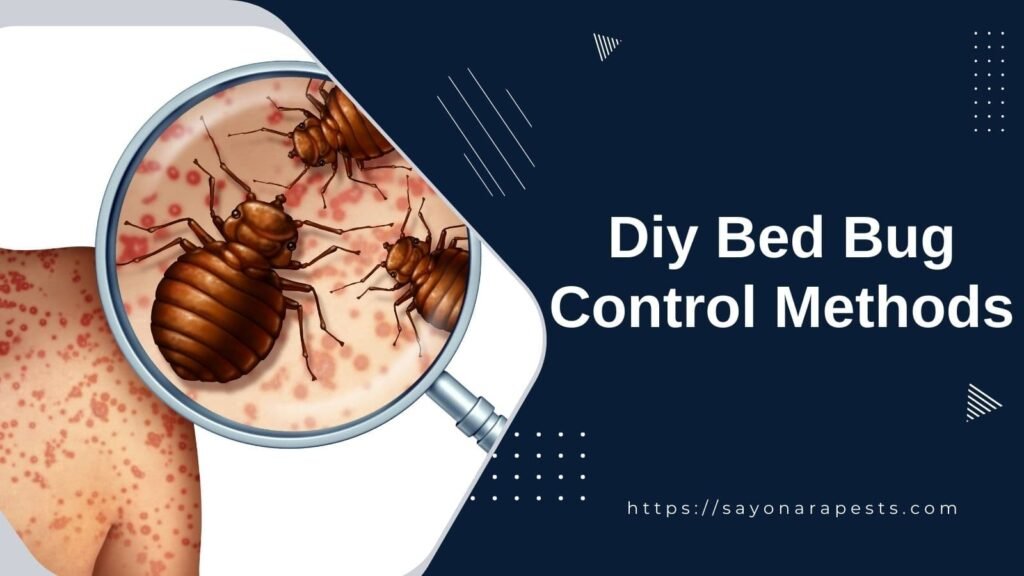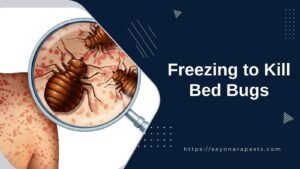DIY Bed Bug Control Methods
With the rise of bed bug infestations, many homeowners and renters are looking for DIY bed bug control methods to tackle the problem on their own.
While DIY methods can be appealing due to their immediate availability and cost savings, it’s essential to understand their effectiveness and potential risks.
Effectiveness of DIY Treatments
Do-it-yourself treatments for bed bugs involve various techniques, ranging from heat and steam to natural remedies and chemical solutions. The effectiveness of these treatments can vary greatly, with some individuals finding success and others facing ongoing infestations.
One common approach is using heat to kill bed bugs, which can be effective if the temperature is high enough to penetrate all infested areas.
Similarly, using steam to kill bed bugs can also be a viable method, as it can reach cracks and crevices where bed bugs hide.
Another popular DIY option is using diatomaceous earth to kill bed bugs, which can be effective if applied correctly and in the right conditions.
Despite these methods, DIY bed bug treatments are often not fully effective, leading to repeated efforts and additional expenses.
The key to success lies in thoroughness and persistence, which can be challenging for individuals without professional training.
Risks Associated with DIY Methods
The risks associated with DIY bed bug control methods should not be overlooked. Improper use of chemicals in DIY remedies can be hazardous, causing harm to people, pets, and the environment. These treatments can involve chemical pesticides known to cause respiratory problems, skin irritation, and other health issues.
Additionally, there is a risk of not reaching all the hidden bed bugs, which can give the remaining population time to breed and worsen the infestation.
There’s also the possibility of misidentifying pests and using the wrong treatment, leading to wasted time, money, and effort.
Another concern is the potential fire risk when using heat treatments without professional assistance, as well as the challenge of safely applying high temperatures in a home setting.
Moreover, using essential oils such as tea tree and lavender oil may not be effective against infestations and could lead to skin irritation, allergies, and toxicity in humans and pets if misused.
In light of these challenges and risks, individuals may consider professional bed bug treatment options for a more reliable, safe, and effective solution. While DIY methods can provide temporary relief, professional extermination offers advanced techniques and expertise that can fully address bed bug infestations.
Signs of Bed Bug Infestation
Recognizing the signs of a bed bug infestation is the first step in effectively managing these pests. Homeowners, hoteliers, and renters alike must be vigilant in identifying the presence of bed bugs to implement diy bed bug control methods before the situation escalates.
Identifying Bed Bug Bites
Bed bug bites are often the most apparent indication that these unwelcome guests have taken residence.
According to NPMA’s Bugs Without Borders survey, a significant 92 percent of respondents report red, itchy bite marks as a sign of bed bugs, particularly on parts of the body exposed during sleep like the legs and arms.
These bites typically result in swelling and itchy, red welts due to an allergic reaction to bed bug saliva.
It’s important to note that some individuals may not react to bed bug bites, and bites from other insects can be easily mistaken for those of bed bugs.
If you discover such signs, consider seeking treatment and exploring ways to kill bed bugs.
Physical Signs of Bed Bugs
Apart from bites, there are several physical signs that can signal a bed bug infestation. Homeowners should look for:
- Fecal Spots: Small red to reddish-brown fecal spots are common on mattresses, upholstery, or walls. These spots are indicative of a bed bug presence and are one of the most prevalent indicators to look out for.
- Unpleasant Odors: A sweet, musty odor can emanate from areas heavily infested with bed bugs.
- Shed Skins and Eggshells: Finding molted bed bug skins, sticky eggs, or empty eggshells suggests an active or growing infestation. These signs warrant immediate contact with a pest control professional for further assessment and treatment.
- Live Insects: Bed bugs are small, about the size of a pinhead, and grow to the size of an apple seed after feeding. They are nocturnal, making them harder to spot during the day.
Recognizing these signs early can help in implementing diy bed bug control methods effectively.
For additional information on identifying bed bugs in various settings, you can read more about how to check for bed bugs in hotel rooms and preventing bed bugs from spreading.
If you suspect a serious infestation, it’s always best to consult professional bed bug treatment options for assured results.
Preparation for Bed Bug Treatment
Proper preparation is a critical step in the process of eradicating bed bugs. Whether homeowners or renters are tackling the issue or professionals are stepping in, preparation can significantly influence the effectiveness of treatment efforts and the speed at which a bed bug infestation is controlled.
Importance of Preparation
Preparation is essential for a successful bed bug control strategy. As highlighted by the Environmental Protection Agency (EPA), treating bed bugs can be a complex process that may take weeks to months to achieve complete eradication.
Factors such as the extent of the infestation, the cooperation of residents, and the thoroughness of the treatment play pivotal roles in the outcome.
It is crucial that everyone involved is committed to the process and understands their role.
This can include tasks such as decluttering to reduce hiding places, washing and heat-drying bed linens and clothes, and encasing mattresses and pillows to prevent further infestation.
Following the steps diligently and, if necessary, repeating them ensures that all bed bugs and their eggs are eliminated.
Using Bed Bug Interceptor Traps
Bed bug interceptor traps are a key element in the preparation phase. These devices are placed under the legs of furniture to catch bed bugs trying to climb up or down, effectively reducing their access to sleeping areas and helping monitor the presence of bed bugs after treatment.
There are commercial interceptor traps available, but DIY solutions can also be effective. The EPA provides guidance on how to create and utilize these traps effectively. When used correctly, interceptors can provide a clear indication of bed bug activity and help gauge the success of treatment efforts.
| Furniture | Interceptor Trap Usage |
|---|---|
| Bed | 4 traps (one for each leg) |
| Sofa | 4-6 traps (depending on the number of legs) |
| Dresser | 4 traps (one for each leg) |
Proper preparation not only aids in the immediate effectiveness of bed bug treatments but also in the long-term prevention of reinfestation.
By following these steps, homeowners, renters, and hospitality providers can ensure a higher success rate in their DIY bed bug control methods and maintain a bed bug-free environment.
DIY Bed Bug Treatment Techniques
When faced with a bed bug infestation, many individuals seek out DIY solutions to tackle the problem. These methods aim to reduce the population of these pests and provide some relief from their bites. Below are some natural remedies and devices that can be implemented as part of a DIY bed bug control strategy.
Natural Remedies for Bed Bugs
Natural remedies offer a less toxic alternative to chemical treatments and can be effective when used correctly. Here are some natural solutions to consider:
- Diatomaceous Earth: This natural powder can cause dehydration in bed bugs, leading to their demise. With a mortality rate of over 90%, it is recommended to sprinkle diatomaceous earth in affected areas and let it sit for at least a week. Be sure to vacuum thoroughly afterward to remove any remaining powder and dead bed bugs. Explore more about using diatomaceous earth to kill bed bugs.
- Baking Soda: Another absorbent material that can dehydrate bed bugs is baking soda. Spread it around infested areas and let it sit for a week before vacuuming up the remnants along with the bed bugs.
- Tea Tree Oil: Known for its anti-parasitic properties, a mixture of two teaspoons of tea tree oil with 50 ml of water can act as a natural insecticide. Spray it in affected areas to combat bed bug infestations. Discover more about natural remedies for killing bed bugs.
- Lemongrass: The acidic properties of lemongrass not only repel but also kill bed bugs. Spray lemongrass solution in infested areas consistently until the problem is under control .
Bed Bug Traps and Interception Devices
Mechanical traps, such as bed bug interception devices, can be an effective part of a DIY bed bug control plan:
- Interception Devices: Placing these traps under the legs of beds can prevent bed bugs from climbing up and reaching the sleeper. Since bed bugs are nocturnal, these traps are most effective during the night when bed bugs emerge for feeding.
- Learn more about bed bug traps and interception devices.
Remember, while DIY methods can be useful, they often need to be part of a comprehensive approach that includes monitoring, prevention, and possibly professional assistance.
For persistent infestations, it’s advisable to seek professional bed bug treatment options to ensure complete eradication. It’s also crucial to be aware of the risks of DIY bed bug control and to understand both their benefits and limitations.
Post-Treatment Actions
After implementing DIY bed bug control methods, it is crucial to carry out post-treatment actions to ensure the effectiveness of the treatment and prevent future infestations.
Monitoring and Retreatment
Monitoring for bed bugs after treatment is essential to confirm the success of your efforts. The Environmental Protection Agency (EPA) highlights that treating bed bugs can be complex and may require several weeks to months, depending on the severity of the infestation.
Success relies on various factors, including the thoroughness of the treatment and the level of cooperation among all residents in a building.
To monitor effectively, consider the following steps:
- Regularly inspect the areas where bed bugs are most likely to hide, such as mattress seams, bed frames, and furniture crevices.
- Use bed bug interceptor traps to catch any bed bugs attempting to climb onto the bed.
- Look for signs of bed bugs, such as live insects, exoskeletons after molting, or small bloodstains on bedding.
If evidence of bed bugs is discovered post-treatment, a retreatment may be necessary. This might involve using different types of pesticides or revisiting non-chemical diy bed bug control methods like heat treatment or diatomaceous earth. Carefully follow label instructions when using any pesticides, as correct usage is crucial for effective control.
Professional Guidance Post-Treatment
Despite the best efforts with DIY methods, sometimes professional guidance is required to completely eliminate a bed bug infestation.
Experts can provide valuable advice on post-treatment actions and ensure that all bed bugs, including their eggs, have been eradicated.
Professional pest control services offer the following advantages:
- Expertise in identifying and reaching bed bug hiding places that might be missed during DIY treatments.
- Access to more potent and targeted treatments, such as professional-grade heat treatments or insecticides.
- Assistance in developing a long-term prevention strategy to keep bed bugs from returning.
After treatment, whether DIY or professional, it’s important to maintain vigilance. Regular cleaning, reducing clutter, and sealing cracks and crevices can help prevent re-infestation.
For travelers and hospitality providers, learning how to check for bed bugs in hotel rooms and preventing bed bugs when traveling are critical steps in stopping the spread of bed bugs.
In conclusion, post-treatment actions are a vital component of bed bug control. Monitoring, possible retreatment, and seeking professional guidance when necessary can help ensure that these pests are gone for good. For more information on bed bug control, explore professional bed bug treatment options and uncover the best bed bug elimination techniques available.
Risks of DIY Bed Bug Control
While many homeowners and renters may be tempted to tackle bed bug infestations on their own, there are significant risks associated with DIY bed bug control methods.
It’s important to consider these risks before proceeding with any treatment.
Health Risks of DIY Methods
DIY treatments for bed bugs often involve the use of chemical pesticides, which can pose serious health risks.
According to Shoreline Pest Services, these chemicals can cause respiratory problems, skin irritation, and other health issues if not used properly. Improper application can also lead to overexposure or contamination of food and water sources, posing a threat to human health.
Essential oils, such as tea tree and lavender oil, are sometimes used in DIY treatments. However, misusing these oils can lead to skin irritation, allergic reactions, and potential toxicity in both humans and pets. There is also a lack of scientific evidence supporting the effectiveness of essential oils against bed bug infestations.
Boric acid, another common DIY treatment, can be effective against pests but must be used with caution. Ingestion or improper handling of boric acid can be toxic, and it can also cause skin irritation. Additionally, incorrect use may lead to resistance in pests, making future treatments less effective.
Effectiveness of Professional Extermination
Compared to DIY methods, professional extermination is generally more effective in eradicating bed bug infestations. Professionals have access to a range of safe and potent treatments that are not typically available to the public.
As noted by Gregory’s Pest Control, DIY bed bug treatments often fail to reach hidden bugs, provide bed bugs with time to breed, and can even pose potential fire risks when heat treatments are applied without expert assistance.
Professionals are also trained to identify and target bed bug hiding spots and can implement comprehensive strategies that include follow-up treatments and monitoring.
This ensures that the entire infestation is eliminated, preventing a recurrence.
When considering the health risks and potential ineffectiveness of DIY methods, it’s clear that professional extermination is a more reliable option for dealing with bed bug infestations.
Homeowners, hoteliers, and renters should weigh these factors carefully and may benefit from exploring professional bed bug treatment options to ensure the safety and effectiveness of their pest control efforts.



